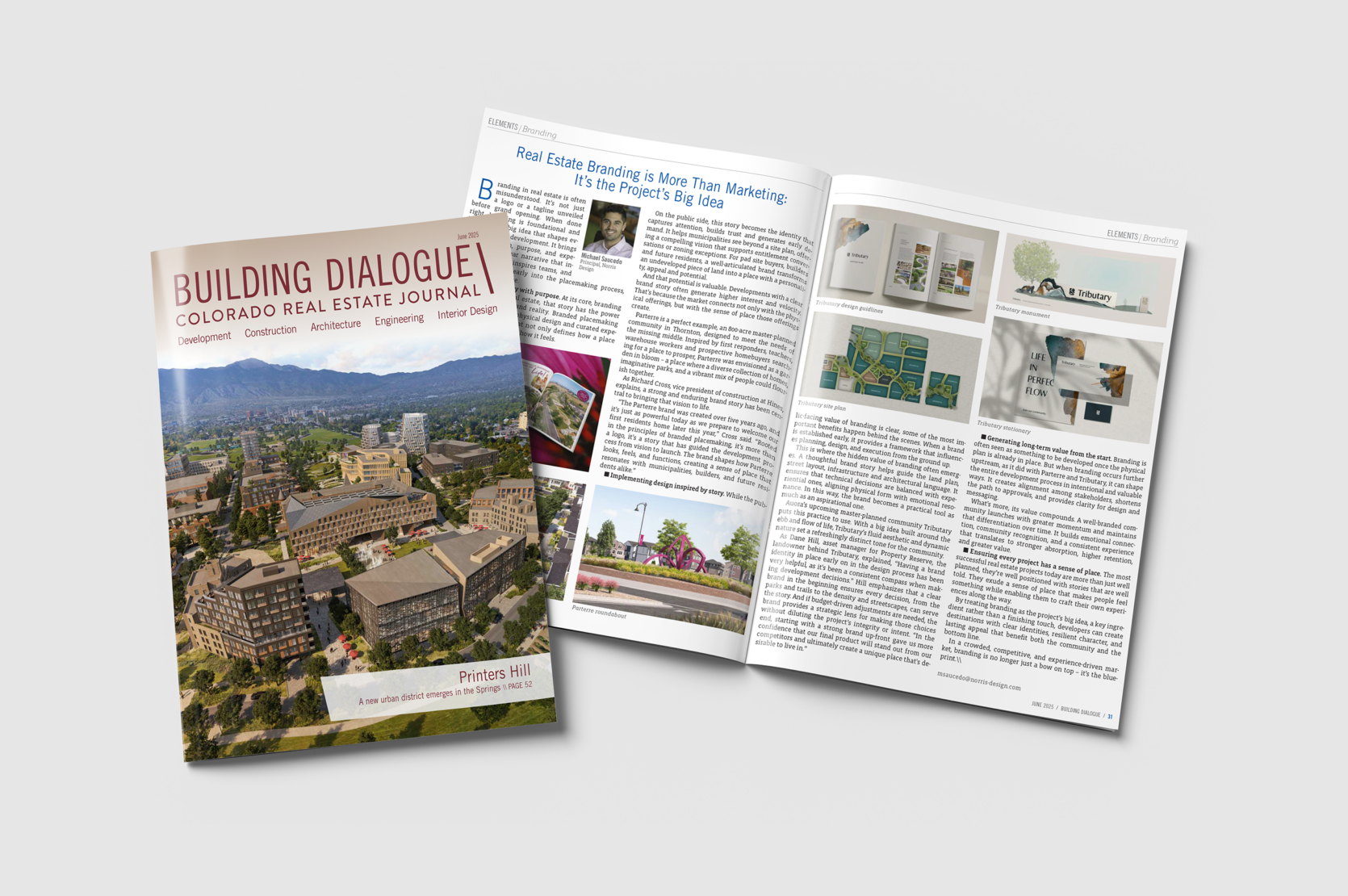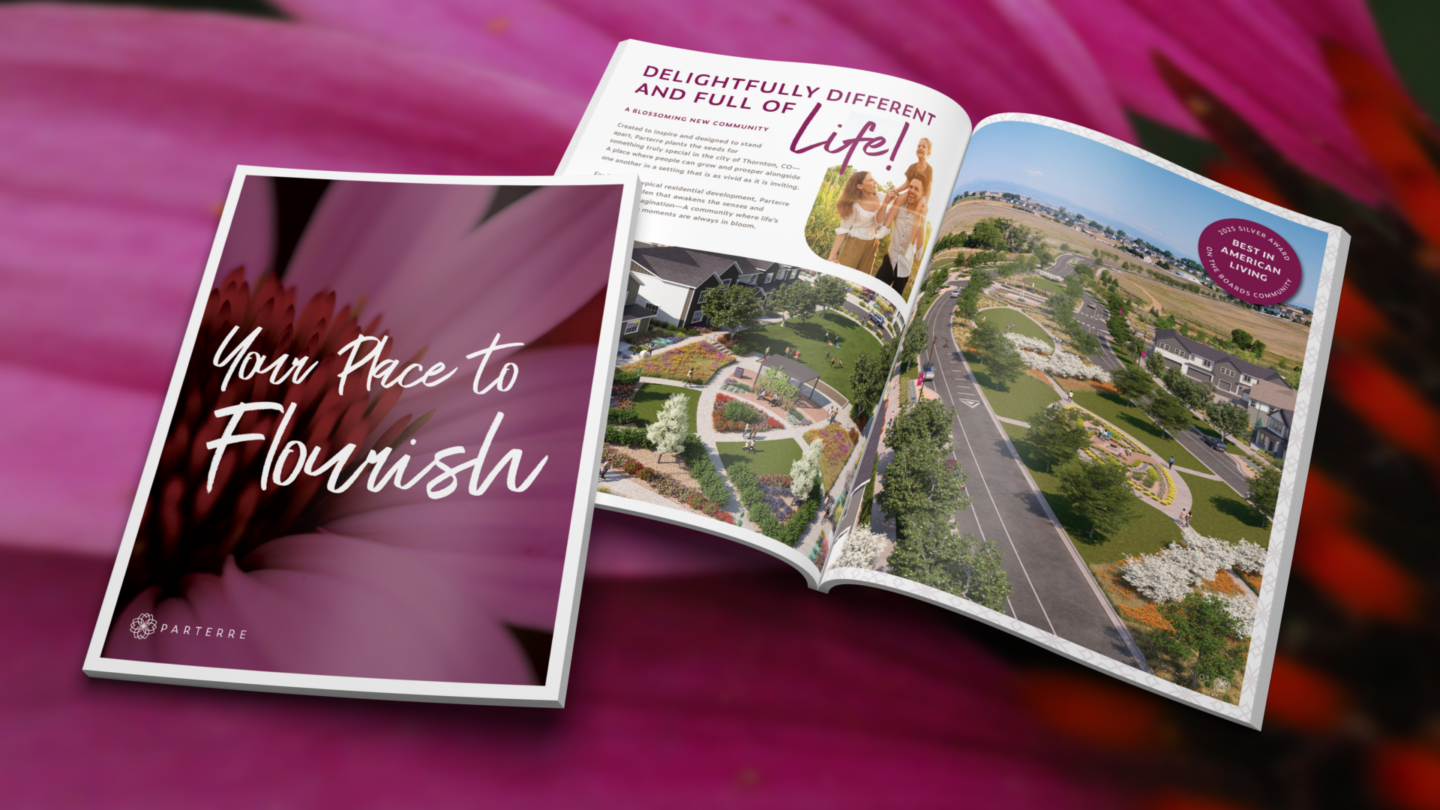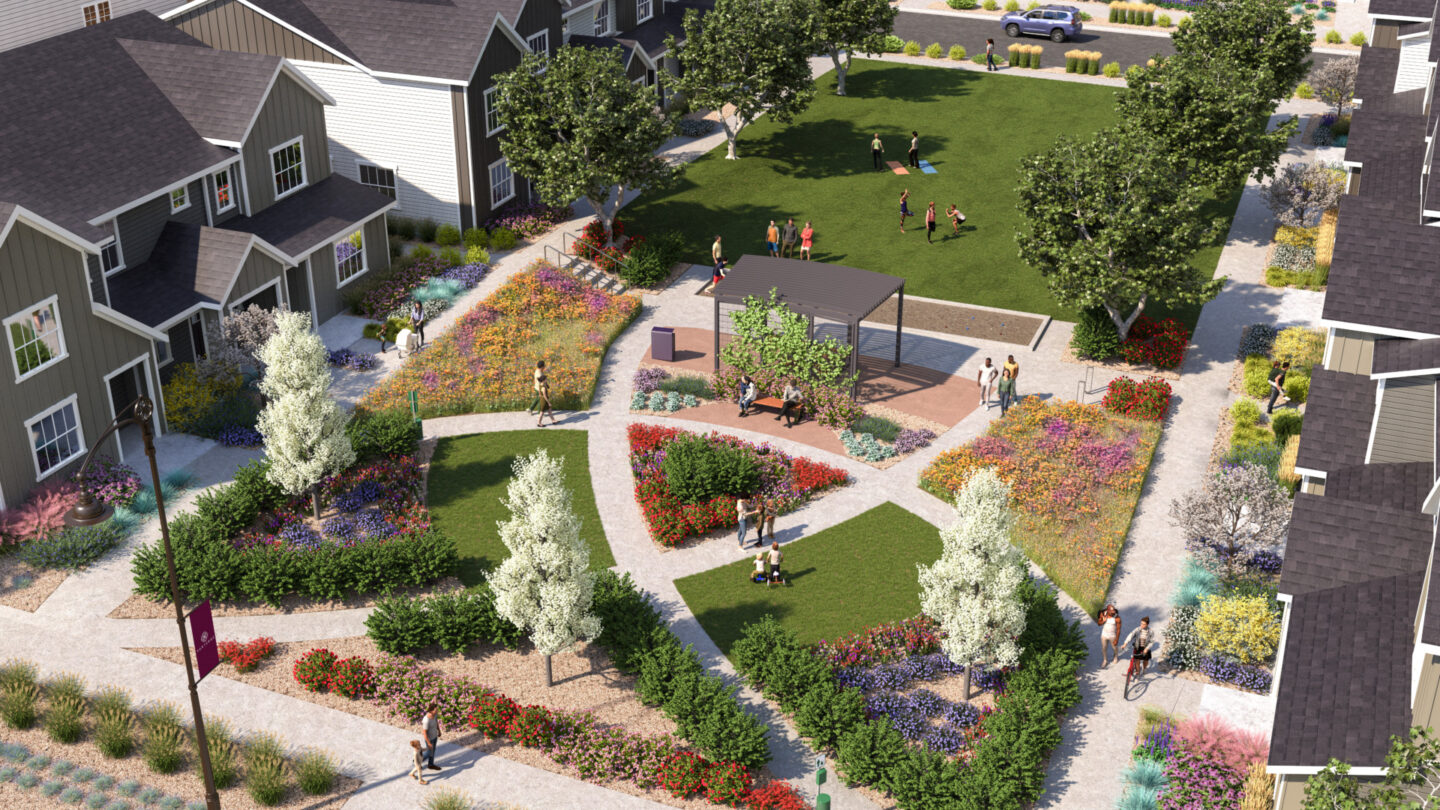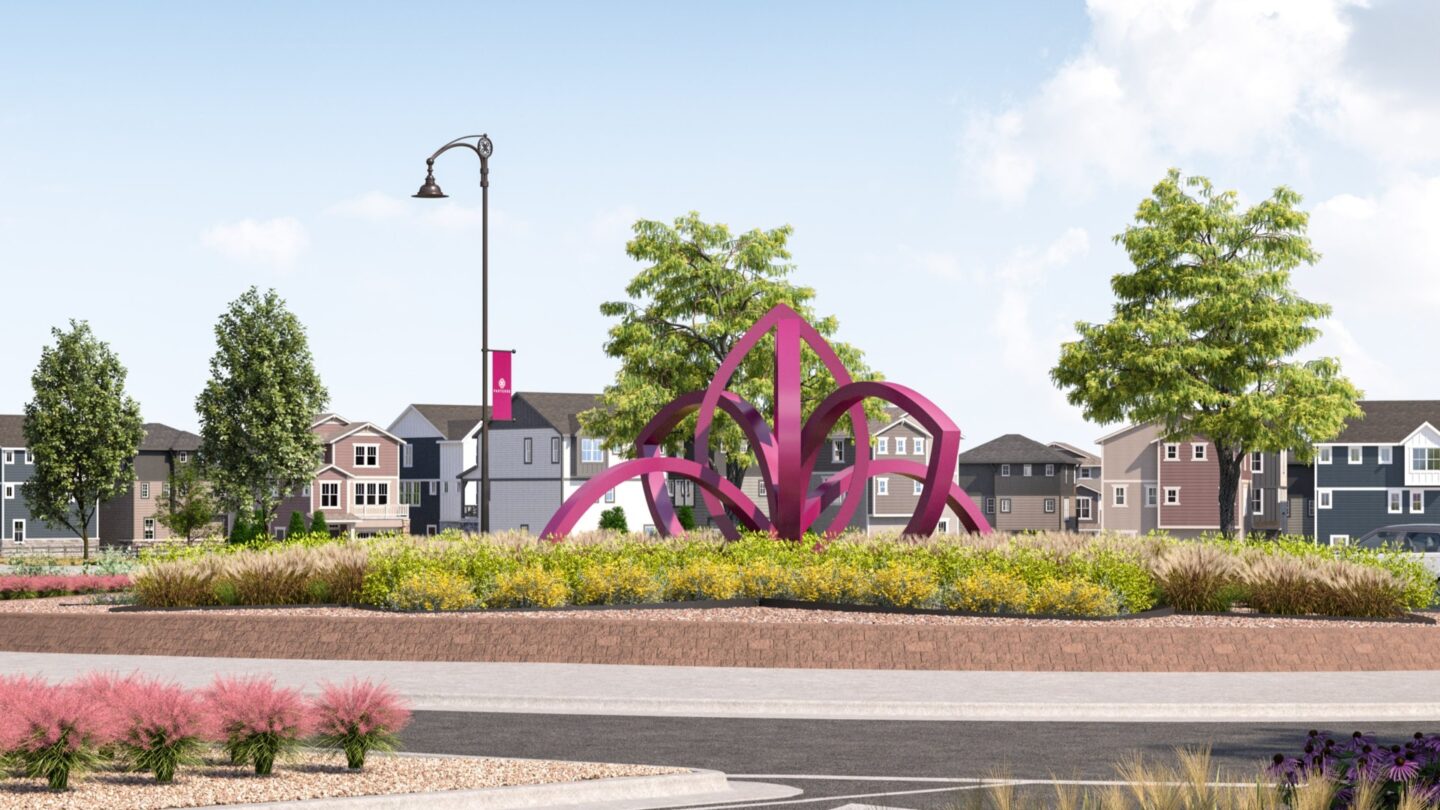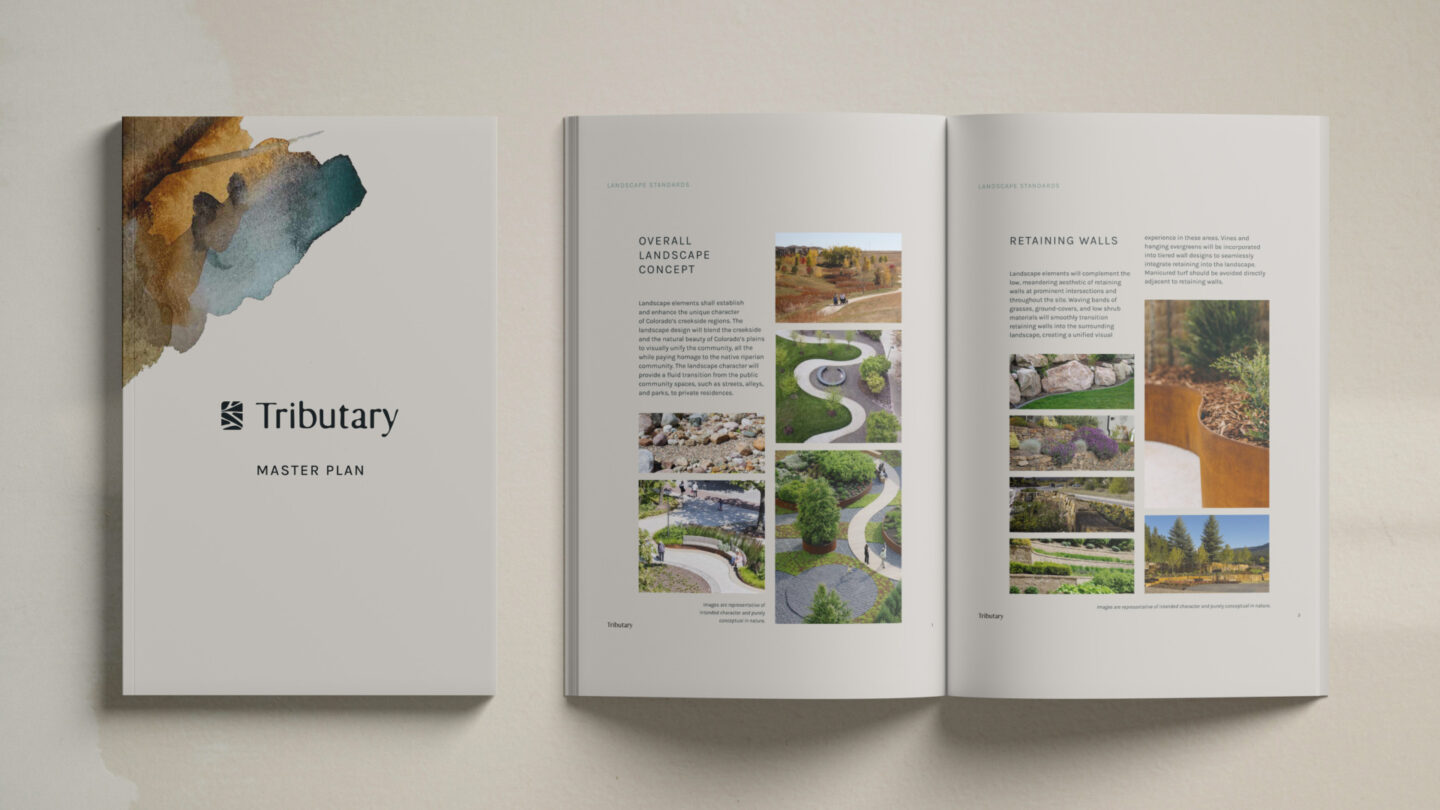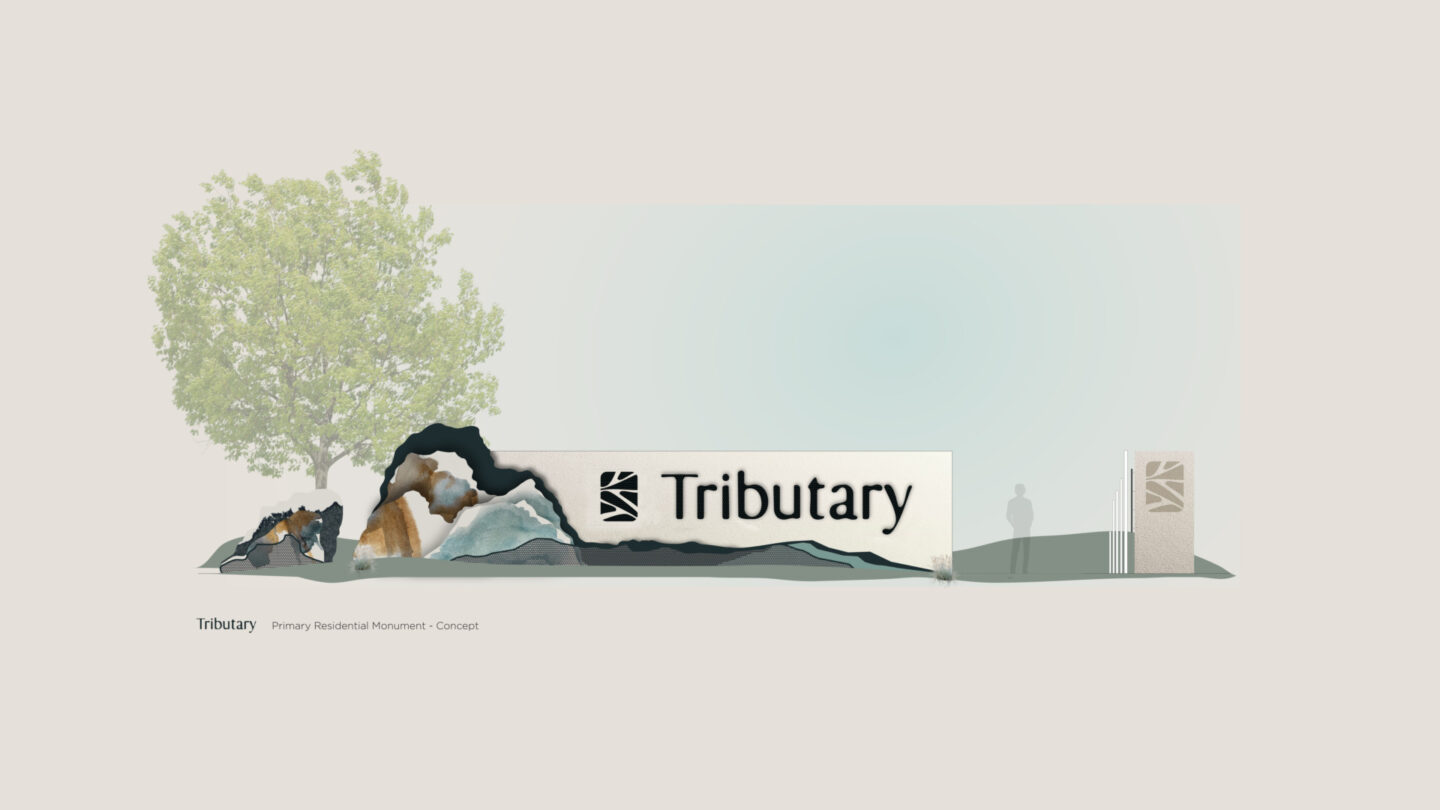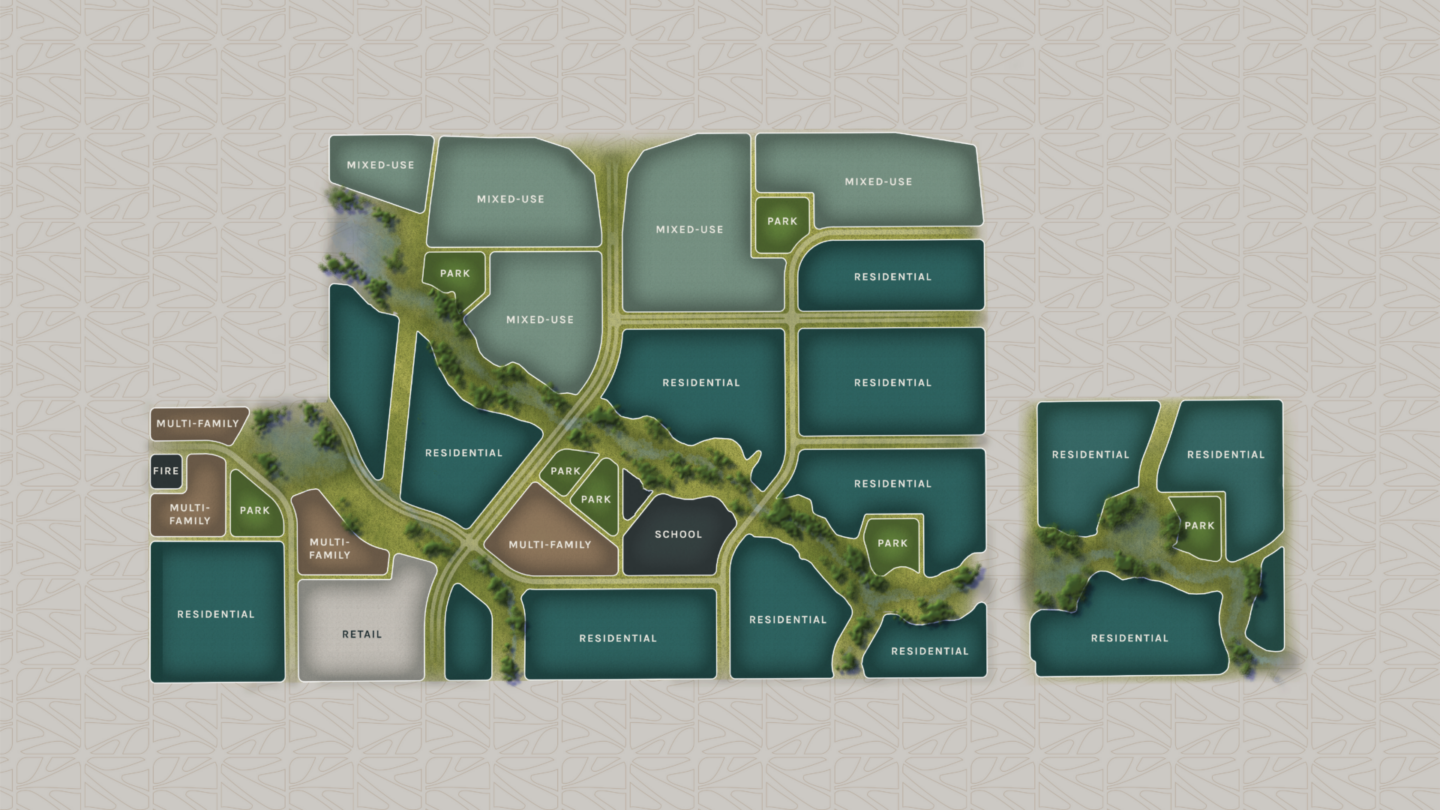Real Estate Branding is More Than Marketing:
It’s the Project’s Big Idea
This excerpt was originally featured in the June 2025 issue of Colorado Real Estate Journal’s Building Dialogue and was authored by Norris Design Principal Michael Saucedo.
Branding in real estate is often misunderstood. It’s not just a logo or a tagline unveiled before grand opening. When done right, branding is foundational and becomes the big idea that shapes every aspect of a development. It brings together design, purpose, and experience into a clear narrative that informs decisions, inspires teams, and when integrated early into the placemaking process, creates lasting value.
Creating identity with purpose.
At its core, branding is storytelling. In real estate, that story has the power to shape perception and reality. Branded placemaking is the convergence of physical design and curated experience. An approach that not only defines how a place looks and functions, but how it feels.
On the public side, this story becomes the identity that captures attention, builds trust and generates early demand. It helps municipalities see beyond a site plan, offering a compelling vision that supports entitlement conversations or zoning exceptions. For pad site buyers, builders and future residents, a well-articulated brand transforms an undeveloped piece of land into a place with a personality, appeal and potential.
And that potential is valuable. Developments with a clear brand story often generate higher interest and greater appeal. That’s because the market connects not only with the physical offerings, but with the sense of place those offerings create.
Parterre is a perfect example, an 800-acre master-planned community in Thornton, designed to meet the needs of the missing middle. Inspired by first responders, teachers, warehouse workers and prospective homebuyers searching for a place to prosper, Parterre was envisioned as a garden in bloom – a place where a diverse collection of homes, imaginative parks, and a vibrant mix of people could flourish together.
As Richard Cross, vice president of construction at Hines, explains, a strong and enduring brand story has been central to bringing that vision to life.
“The Parterre brand was created over five years ago, and it’s just as powerful today as we prepare to welcome our first residents home later this year,” Cross said. “Rooted in the principles of branded placemaking, it’s more than a logo, it’s a story that has guided the development process from vision to launch. The brand shapes how Parterre looks, feels, and functions, creating a sense of place that resonates with municipalities, builders, and future residents alike.”
Implementing design inspired by story.
While the public-facing value branding is clear, some of the most important benefits happen behind the scenes. When a brand is established early, it provides a framework that influences planning, design, and execution from the ground up.
This is where the hidden value of branding often emerges. A thoughtful brand story helps guide the land plan, street layout, infrastructure and architectural language. It ensures that technical decisions are balanced with experiential ones, aligning physical form with emotional resonance. In this way, the brand becomes a practical tool as much as an aspirational one.
Aurora’s upcoming master-planned community Tributary puts this practice to use. With a big idea built around the ebb and flow of life, Tributary’s fluid aesthetic and dynamic nature set a refreshingly distinct tone for the community.
As Dane Hill, asset manager for Property Reserve, the landowner behind Tributary, explained, “Having a brand identity in place early on in the design process has been very helpful, as it’s been a consistent compass when making development decisions.” Hill emphasizes that a clear brand in the beginning ensures every decision, from the parks and trails to the density and streetscapes, can serve the story. And if budget-driven adjustments are needed, the brand provides a strategic lens for making those choices without diluting the project’s integrity or intent. “In the end, starting with a strong brand up-front gave us more confidence that our final product will stand out from our competitors and ultimately create a unique place that’s desirable to live in.”
Generating long-term value from the start.
Branding is often seen as something to be developed once the physical plan is already in place. But when branding occurs further upstream, as it did with Parterre and Tributary, it can shape the entire development process in intentional and valuable ways. It creates alignment among stakeholders, shortens the path to approvals, and provides clarity for design and messaging.
What’s more, its value compounds. A well-branded community launches with greater momentum and maintains that differentiation over time. It builds emotional connection, community recognition, and a consistent experience that translates to stronger absorption, higher retention, and greater value.
Ensuring every project has a sense of place.
The most successful real estate projects today are more than just well planned, they’re well positioned with stories that are well told. They exude a sense of place that makes people feel something while enabling them to craft their own experiences along the way.
By treating branding as the project’s big idea, a key ingredient rather than a finishing touch, developers can create destinations with clear identities, resilient character, and lasting appeal that benefit both the community and the bottom line.
In a crowded, competitive, and experience-driven market, branding is no longer just a bow on top – it’s the blueprint.
